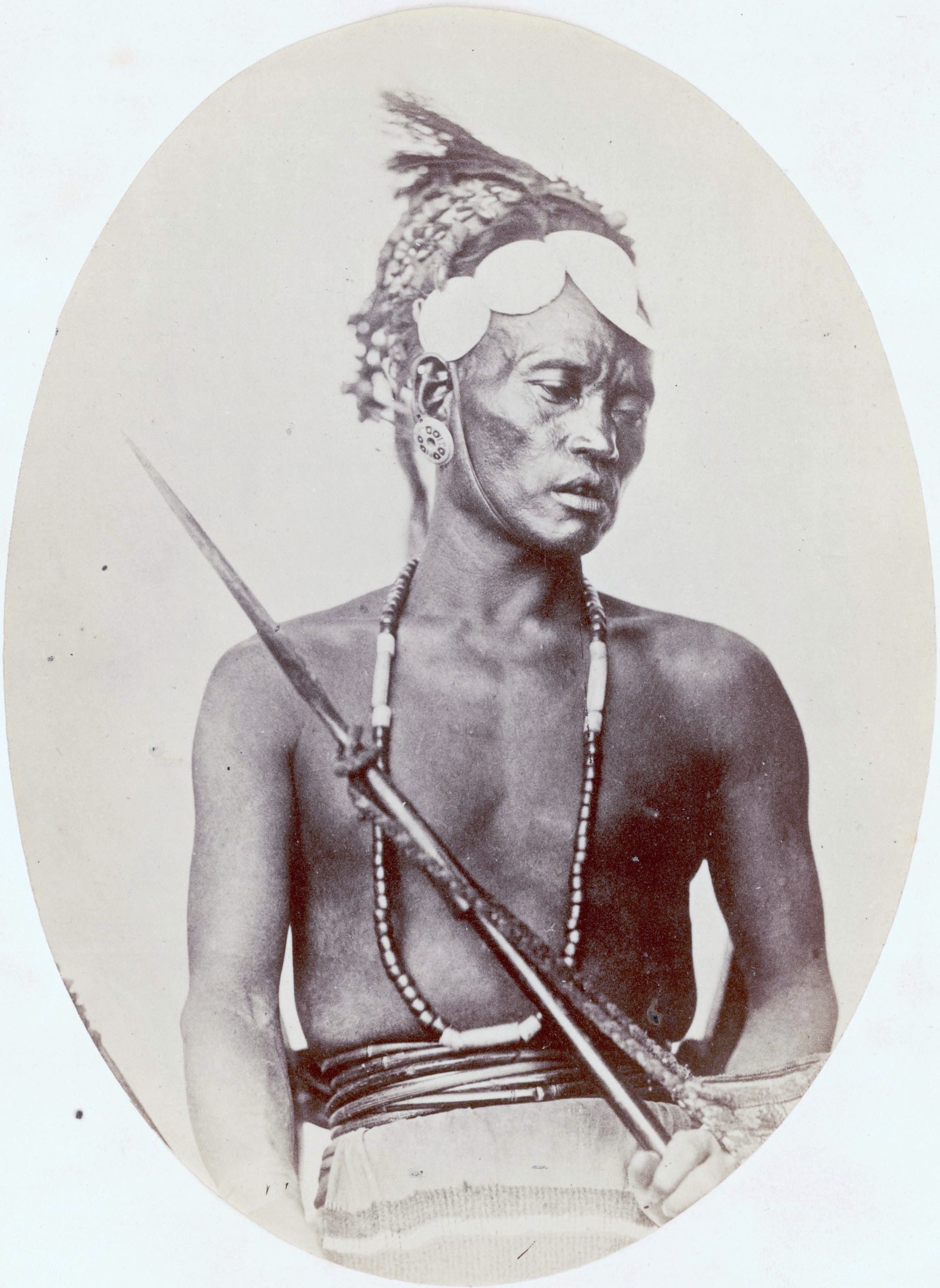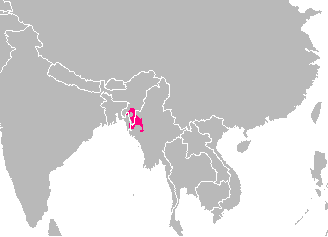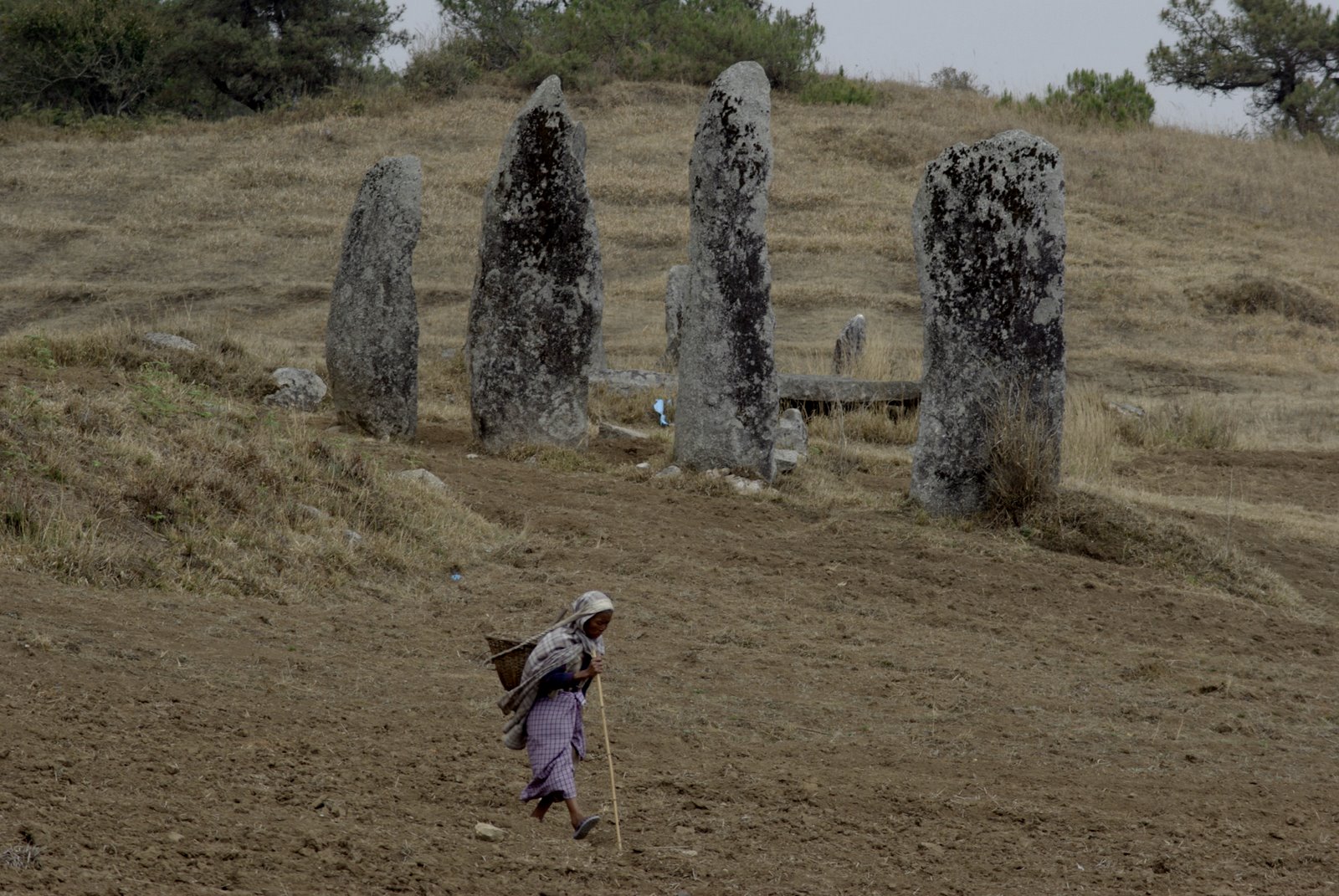|
Mao Naga People
The Mao are one of the major ethnic groups constituting the Nagas, a group of ethnic groups spread over the easternmost part of India. The Maos inhabit the northern part of Manipur and some parts of Nagaland States of India bounded by similar Naga ethnic groups such as the Angamis and Chakhesangs to the north, the Maram Nagas and Zeme Nagas to the west and south, and the Tangkhuls and Poumeis to the east. The Maos are also known as Memei or Ememei, in their own language. The term 'Mao' also refers to the area where most of the old and original villages are situated, as distinguished from the newer settlements in an expanded area of their habitation. Origin and uses of the term Etymology The people who are today known as the Maos (Mao, as the proper name of the tribe) do not refer to themselves in their language as such; rather they still call themselves "Memei" or "Ememei". Indeed, the term "Mao" is of outside origin and does not figure in their language. The term " ... [...More Info...] [...Related Items...] OR: [Wikipedia] [Google] [Baidu] |
Mao Language
Sopvoma or Mao is a Sino-Tibetan languages, Sino-Tibetan language of Angami–Pochuri languages, Angami–Pochuri linguistic sub branch. It is spoken primarily in Senapati district, northwestern Manipur and in Nagaland, India. It is similar to Angami language, Angami. According to ''Ethnologue'' (2009), the Paomata dialect may be the same as Poumei (Poumai) Naga, which has received a separate ISO code. See Mao Naga language, Mao Naga Language for further details. Mao is somewhat similar to the Sino-Tibetan languages, Sino-Tibetian languages in terms of grammar and style of use. Unlike English it is a phonetic and tonal language. Spoken mainly by the Mao Nagas A story referring to the Angami Naga, Angami peoples and the Mao Naga people, Mao peoples (Not to be confused with Mao Zedong, China's ex-chairman) shows how the two amicably split into the north and south (i.e. Nagaland, Manipur), also showing why the two languages are similar. The script has been lost for years, follo ... [...More Info...] [...Related Items...] OR: [Wikipedia] [Google] [Baidu] |
Assam
Assam (; ) is a state in northeastern India, south of the eastern Himalayas along the Brahmaputra and Barak River valleys. Assam covers an area of . The state is bordered by Bhutan and Arunachal Pradesh to the north; Nagaland and Manipur to the east; Meghalaya, Tripura, Mizoram and Bangladesh to the south; and West Bengal to the west via the Siliguri Corridor, a wide strip of land that connects the state to the rest of India. Assamese and Boro are the official languages of Assam, while Bengali is an additional official language in the Barak Valley. Assam is known for Assam tea and Assam silk. The state was the first site for oil drilling in Asia. Assam is home to the one-horned Indian rhinoceros, along with the wild water buffalo, pygmy hog, tiger and various species of Asiatic birds, and provides one of the last wild habitats for the Asian elephant. The Assamese economy is aided by wildlife tourism to Kaziranga National Park and Manas National Park, which are ... [...More Info...] [...Related Items...] OR: [Wikipedia] [Google] [Baidu] |
Lotha Naga
The Lotha Nagas, also known as Kyong, are a major Naga ethnic group native to Wokha District in the Indian state of Nagaland. Origins Scholars have presented several theories about the migration of the Lothas and the other Naga tribes, based on vocal explanations passed on from one generation to another. Migration from eastern China According to this theory mentioned by Hokishe Sema, the Lothas started moving out from the Eastern part of China, passing through Malaysia, Indonesia and Burma en route. After many long years of movement, they reached a place called '' Khezakhenoma'' located between Manipur and Chakhesang (the present-day Phek), where they settled for a short period of time. From ''Khezakhenoma'' they moved towards the present day settlement of the Lothas i.e. ''Wokha'' where they finally settled. Migration from Manchuria This theory, mentioned by T. Phillips, says that the Lothas migrated from Manchuria, passing through the foothills of the Himalayas and rea ... [...More Info...] [...Related Items...] OR: [Wikipedia] [Google] [Baidu] |
Rengma
Rengma is a Naga tribe found in Nagaland and Assam states of India. According to the 2011 Census of India, the population of Rengmas in Nagaland stands at 62,951 and the population of Rengmas in Assam is around 22,000. Tseminyü District is the headquarters of the Rengmas in Nagaland and the headquarters of the Rengmas in Assam is located at Phentsero/Karenga Village. History Like other Naga tribes, there are few written historical records of Rengmas. According to the local traditions, the Rengmas and the Lothas (or Lhotas) were once part of a single tribe. There are also oral records of a mighty struggle between the combined Rengma villages, and the Lotha village of Phiro. There are records of the Rengmas' conflict with the Angami Nagas. Slavery used to be a practice among the Rengmas, and the slaves were known by the names ''menugetenyu'' and ''itsakesa''. By the time the British arrived in the Naga region, the slavery was a declining practice, and no Rengma appears to have ... [...More Info...] [...Related Items...] OR: [Wikipedia] [Google] [Baidu] |
Thangal
The thangals (also spelled tangals) are a social group among the Muslims of Kerala, south India.Kunhali, V. "Muslim Communities in Kerala to 1798" PhD Dissertation Aligarh Muslim University (1986/ref> The thangals are often regarded as roughly equivalent to the more general Sayyid, Sayyids or Sharifs, or the descendants of the Islamic prophet Muhammad, of the wider Islamic culture.Miller, Roland E., ''Mappila Muslim Culture''. New York, State University of New York Press, 2015. pp. 268-271. Most members of the community practices endogamy and rarely marry outside from their community.Kunhali, V. "Muslim Communities in Kerala to 1798" PhD Dissertation Aligarh Muslim University (1986/ref> The thangal families are numerous in Kerala, all receive recognition, but some are considered as saints. The thangal identification brings much 'reverence and attention' in the Kerala Muslim community (which predominantly identifies with Shafi'i madhab). Some individuals take advice from the tha ... [...More Info...] [...Related Items...] OR: [Wikipedia] [Google] [Baidu] |
China
China, officially the People's Republic of China (PRC), is a country in East Asia. It is the world's most populous country, with a population exceeding 1.4 billion, slightly ahead of India. China spans the equivalent of five time zones and borders fourteen countries by land, the most of any country in the world, tied with Russia. Covering an area of approximately , it is the world's third largest country by total land area. The country consists of 22 provinces, five autonomous regions, four municipalities, and two Special Administrative Regions (Hong Kong and Macau). The national capital is Beijing, and the most populous city and financial center is Shanghai. Modern Chinese trace their origins to a cradle of civilization in the fertile basin of the Yellow River in the North China Plain. The semi-legendary Xia dynasty in the 21st century BCE and the well-attested Shang and Zhou dynasties developed a bureaucratic political system to serve hereditary monarchies, or dyna ... [...More Info...] [...Related Items...] OR: [Wikipedia] [Google] [Baidu] |
Southeast Asia
Southeast Asia, also spelled South East Asia and South-East Asia, and also known as Southeastern Asia, South-eastern Asia or SEA, is the geographical United Nations geoscheme for Asia#South-eastern Asia, south-eastern region of Asia, consisting of the regions that are situated south of mainland China, east of the Indian subcontinent, and north-west of mainland Australia. Southeast Asia is bordered to the north by East Asia, to the west by South Asia and the Bay of Bengal, to the east by Oceania and the Pacific Ocean, and to the south by Australia (continent), Australia and the Indian Ocean. Apart from the British Indian Ocean Territory and two out of atolls of Maldives, 26 atolls of Maldives in South Asia, Maritime Southeast Asia is the only other subregion of Asia that lies partly within the Southern Hemisphere. Mainland Southeast Asia is completely in the Northern Hemisphere. East Timor and the southern portion of Indonesia are the only parts that are south of the Equator. Th ... [...More Info...] [...Related Items...] OR: [Wikipedia] [Google] [Baidu] |
Kuki People
The Kuki people are an ethnic group native to the Mizo Hills (formerly Lushai), a mountainous region in the southeastern part of Mizoram and Manipur in India. The Kuki constitute one of several hill tribes within India, Bangladesh, and Myanmar. In Northeast India, they are present in all states except Arunachal Pradesh. Some fifty tribes of Kuki peoples in India are recognised as scheduled tribes, based on the dialect spoken by that particular Kuki community as well as their region of origin. The Chin people of Myanmar and the Mizo people of Mizoram are kindred tribes of the Kukis. Collectively, they are termed the Zo people. History Early history The early history of the Kukis is obscure. The origin of the word "Kuki" is uncertain; it is an exonym: it was not originally as a self-designation by the tribes that are now called Kukis. According to the colonial British writer Adam Scott Reid, the earliest reference to the word Kuki can be dated to 1777 CE, when it first appear ... [...More Info...] [...Related Items...] OR: [Wikipedia] [Google] [Baidu] |
Khasi People
The Khasi people are an ethnic group of Meghalaya in north-eastern India with a significant population in the bordering state of Assam, and in certain parts of Bangladesh. Khasi people form the majority of the population of the eastern part of Meghalaya, that is Khasi Hills, constituting 78.3% of the region's population, and is the state's largest community, with around 48% of the population of Meghalaya. They are among the few Austroasiatic-speaking peoples in South Asia. The Khasi tribe holds the distinction of being one of the few remaining matriarchal tribes of the world. Under the Constitution of India, the Khasis have been granted the status of Scheduled Tribe. History Khasi mythology Khasi mythology traces the tribe's original abode to ("The Seven Huts"). According to the Khasi mythology, (God, the Lord Master) had originally distributed the human race into 16 heavenly families (). However, seven out of these 16 families were stuck on earth while the other 9 in heaven ... [...More Info...] [...Related Items...] OR: [Wikipedia] [Google] [Baidu] |
Sino-Tibetan Languages
Sino-Tibetan, also cited as Trans-Himalayan in a few sources, is a family of more than 400 languages, second only to Indo-European in number of native speakers. The vast majority of these are the 1.3 billion native speakers of Chinese languages. Other Sino-Tibetan languages with large numbers of speakers include Burmese (33 million) and the Tibetic languages (6 million). Other languages of the family are spoken in the Himalayas, the Southeast Asian Massif, and the eastern edge of the Tibetan Plateau. Most of these have small speech communities in remote mountain areas, and as such are poorly documented. Several low-level subgroups have been securely reconstructed, but reconstruction of a proto-language for the family as a whole is still at an early stage, so the higher-level structure of Sino-Tibetan remains unclear. Although the family is traditionally presented as divided into Sinitic (i.e. Chinese) and Tibeto-Burman branches, a common origin of the non-Sinitic languages has n ... [...More Info...] [...Related Items...] OR: [Wikipedia] [Google] [Baidu] |
Kuki-Chin–Naga Languages
The Kuki-Chin–Naga languages are a geographic clustering of languages of the Sino-Tibetan family in James Matisoff's classification used by ''Ethnologue'', which groups it under the non-monophyletic "Tibeto-Burman". Their genealogical relationship both to each other and to the rest of Sino-Tibetan is unresolved, but Matisoff lumps them together as a convenience pending further research. The languages are spoken by the ethnically related Naga people of Nagaland, the Chin people of Burma, and the Kuki people. The larger among these languages have communities of several tens of thousands of native speakers, and a few have more than 100,000, such as Mizo (674,756 in India as of 2001), Thadou (150,000) or Lotha language (180,000). "Kuki" and "Chin" are essentially synonyms, whereas the Naga speak languages belonging to several Sino-Tibetan branches. Languages The established branches are: * Kuki-Chin ** Southern Naga (Northwestern) ** Northern ** Central ** Maraic ** Khomic * ... [...More Info...] [...Related Items...] OR: [Wikipedia] [Google] [Baidu] |







